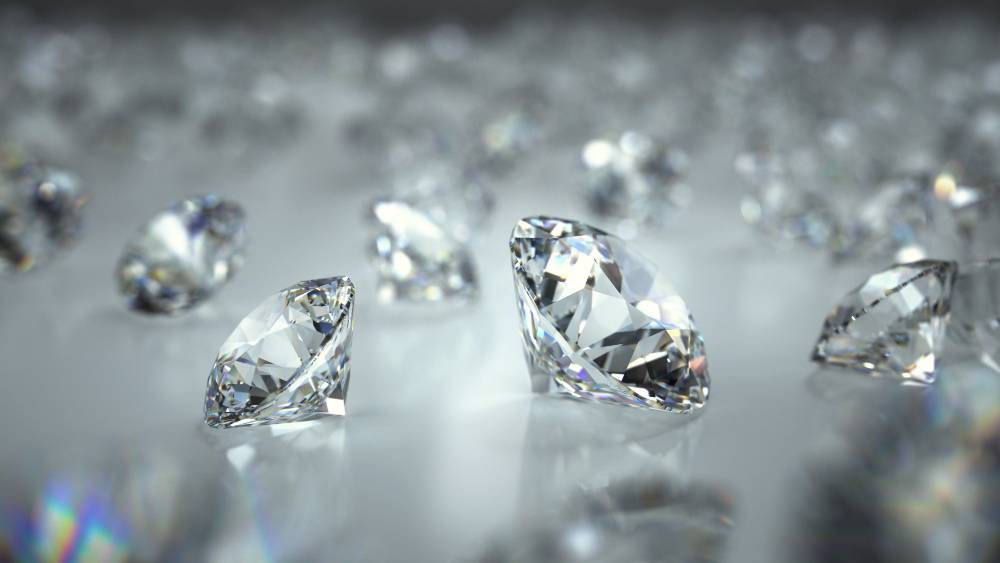In the realm of gemstones, GRA quality moissanite has emerged as a subject of interest both for its unique material characteristics and the innovative processes involved in its creation. This article aims to clarify the nature of moissanite and the methodology of its synthesis. Our exploration is grounded in a scientific analysis, providing a comprehensive understanding for scholars and enthusiasts alike.
The inception of synthetic gemstones has revolutionized the field of gemology, with gra moissanite standing out due to its distinct properties and ethical production methods. As a laboratory-grown gemstone, it offers an intriguing alternative to naturally occurring diamonds and other precious stones.
What is a GRA certified moissanite?
GRA certified moissanite refers to moissanite stones that have been certified by the Gemological Research Association (GRA). The GRA is an organization that specializes in the analysis, grading, and certification of gemstones. Their certification process is designed to provide authenticity, quality assurance, and detailed information about the gemstones they examine.
When moissanite is GRA certified, it means that it has undergone a thorough examination by the organization’s gemologists. The certification typically includes an assessment of the moissanite’s quality, including its cut, color, clarity, carat weight, and other relevant characteristics. This process is somewhat similar to the grading of diamonds and other precious stones.

Key aspects of GRA certification for moissanite include:
- Authenticity Verification: The certification ensures that the stone is genuine moissanite and not another type of gemstone or a synthetic imitation.
- Quality Assessment: The GRA evaluates the quality of the moissanite, including its cut, which affects the stone’s brilliance and fire, and its clarity, which refers to the presence of any internal or surface imperfections.
- Color Grading: Moissanite, like diamonds, can vary in color. The GRA certification will often include a color grade, which helps in determining the stone’s value and appeal.
- Carat Weight: This is a measurement of the moissanite’s weight, which is a factor in its overall value.
- Identification and Traceability: The certification provides a unique identification number for the moissanite, which can be useful for insurance, resale, or verification purposes.
Having a GRA certification for moissanite is particularly important for consumers as it provides a level of assurance regarding the stone’s quality and authenticity. This is especially significant in the context of moissanite’s growing popularity as an affordable and ethical alternative to diamonds in jewelry making.
What is GRA Moissanite?
Chemical and Physical Properties:
Moissanite is a form of silicon carbide (SiC), a compound renowned for its hardness, brilliance, and thermal conductivity. Its crystal structure is similar to that of a diamond, which bestows it with comparable visual properties, such as a high refractive index and lustrous fire. However, it surpasses diamond in terms of thermal conductivity and displays a broader spectrum of light dispersion.
Historical Context and Modern Relevance:
The natural occurrence of moissanite is exceedingly rare, typically found in minute quantities within certain types of meteorites and as inclusions in other minerals. The modern incarnation of moissanite, synthesized in controlled laboratory environments, provides a sustainable and ethical alternative to traditional diamond mining, which often involves environmental and humanitarian concerns.
How is Moissanite Made?
Synthesis Techniques:
The production of moissanite involves sophisticated technological processes. The most common method is the Thermal Decomposition of Silicon Carbide, often referred to as the Lely method. In this process, high-purity silicon carbide is sublimated in a high-temperature furnace, leading to the growth of large single crystals.
Advancements in Manufacturing:
Recent advancements in moissanite synthesis have focused on enhancing the purity and optical properties of the final product. Innovations in crystal growth and cutting techniques have enabled the production of gra moissanite that rivals natural gemstones in appearance and quality.
Applications and Indications for Moissanite
Jewelry Industry: In the jewelry industry, gra moissanite serves as a cost-effective and ethically sound alternative to diamonds. Its durability, brilliance, and affordability make it a popular choice for engagement rings, necklaces, and other adornments.
Beyond Jewelry: Beyond its aesthetic applications, the material properties of gra moissanite have implications in various scientific and industrial domains. Its thermal conductivity and hardness make it suitable for high-temperature and high-pressure applications, such as in semiconductors and cutting tools.
Moissanite represents not only a triumph of human ingenuity in replicating the beauty of nature but also reflects a growing consciousness towards sustainable and ethical practices in both the gemological and broader scientific communities.
